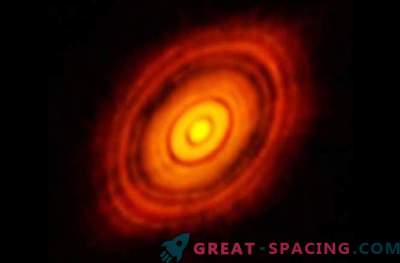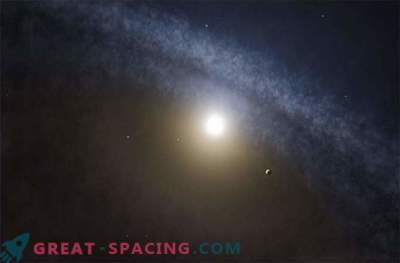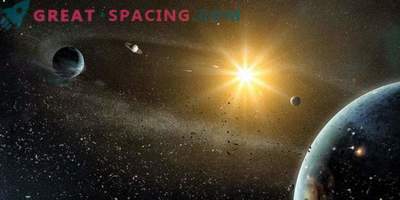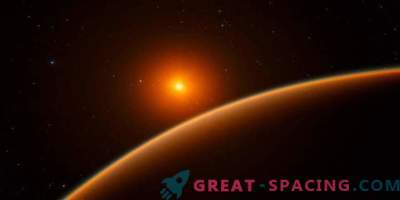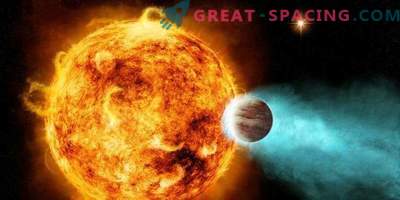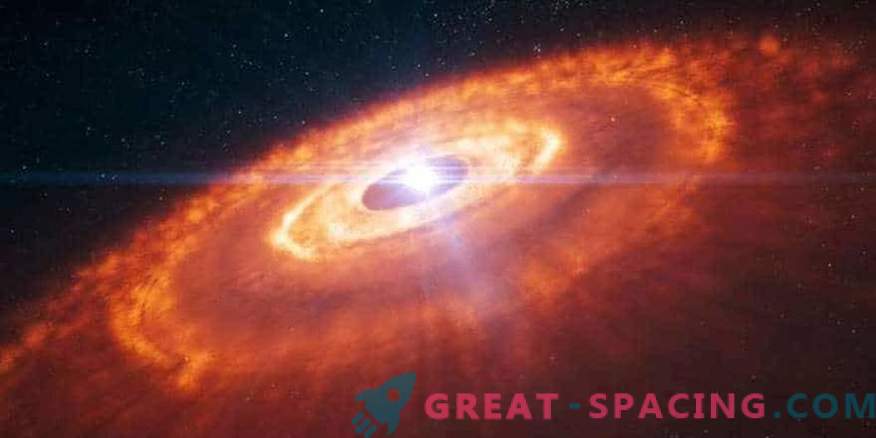
The new model is capable of unraveling the puzzle that puzzled astronomers since the time of the Kepler space telescope, which has found thousands of planets. Most of them fall into the category of “super-Earth”, whose mass is located between the Earth and Neptune. The problem is that many of the observed features should appear on more massive planets that could overshadow Jupiter.
A new scenario was previously considered impossible: the super-Earth is able to cut gaps on disks. That is, now the strange kind of disks can be explained by the most common phenomena in the galaxy.
Kepler found many planets, but they are all old and revolve around solar stars. But scientists wanted to look at the young specimen to understand the process of birth. Therefore, they plunged into an object acting as a children's likeness of our system.
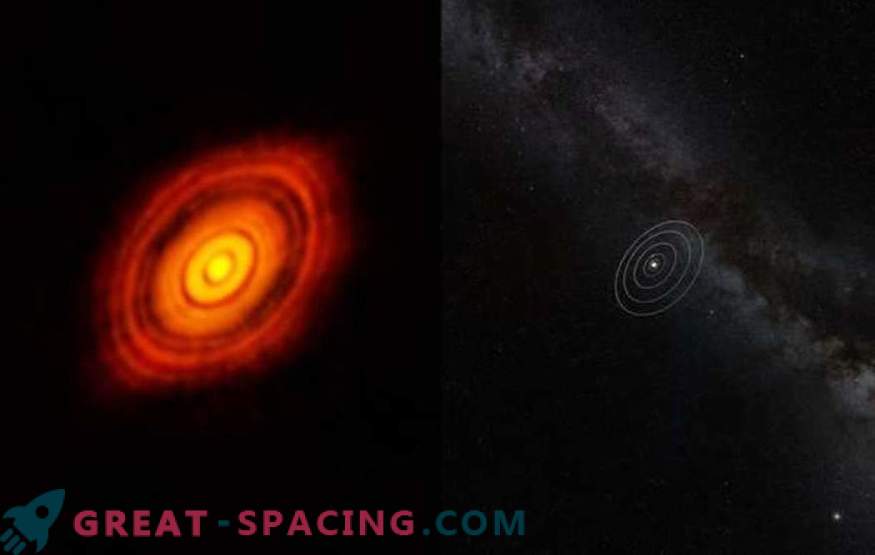
The protoplanetary disk around HL Taurus is a solar star whose age is one million years. Removed 450 light years and overshadows our system (right). The image shows concentric and bright rings, separated by spaces - features that astronomers try to explain
Such disks form when a giant cloud of interstellar gas and dust condenses due to the influence of gravity. In the center hides a young star with an age of one million years. Tiny dust particles merge into grains, and those into pebbles gradually form a familiar planetary system. Such discs do not exist forever. They are present in young stars, but disappear at the age of 10 million years. It is believed that most of the material is taken away by a star, and the rest is blown away by its rays.
But these bands remained a mystery. Among the assumptions was the planet, and this is the most attractive option, since an object can clear its way during the orbital path and leave the “path” behind.
With the help of the ALMA array in 2014 and 2016 managed to get pictures of HL Taurus and TW Hydra. It was they who discovered the amazing details and features that do not fit into modern models. For example, two pairs of spaces were too narrow and close to each other. That is, there should have been two planets rotating extremely cohesively, which does not stand up to scrutiny.
However, a new observation leads us to a synthetic observation - a simulation of what ALMA will see in reality. To do this, scientists have made changes to the parameters of the evolution of the evolution of the protoplanetary disk, namely, suggested a low viscosity and added dust to the mixture. Previous models were based on a higher viscosity of the disk and took into account only the gaseous component.
Viscosity in protoplanetary disks can be created by turbulence and other physical influences. The importance of this idea lies in the fact that you no longer need to refer to giant planets like Jupiter. Enough ordinary super-Earth.



